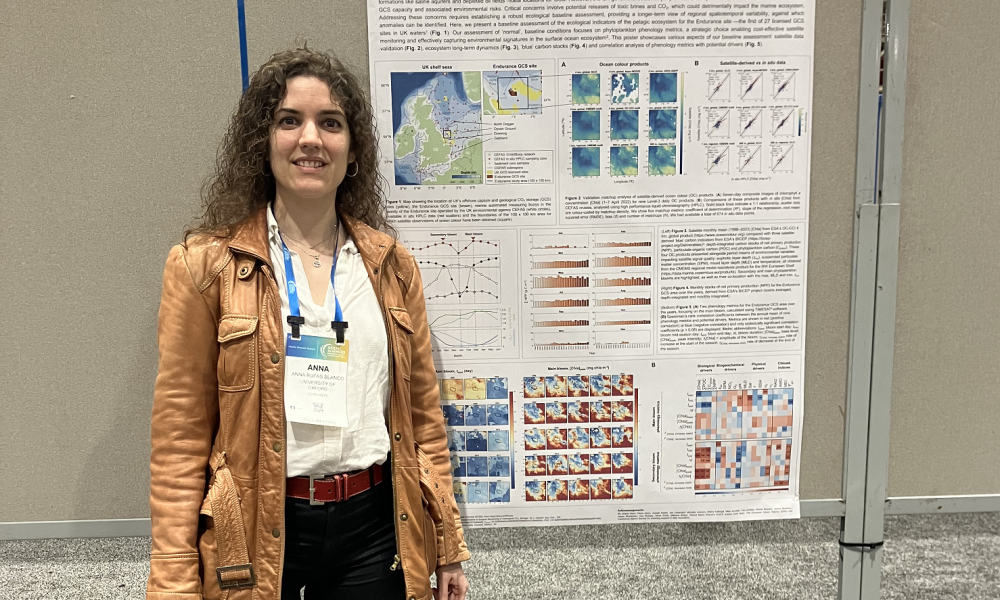Presenting at the Ocean Sciences Meeting: Anna Rufas
Associated Sprints
Recent News
- Agile at the BES Symposium
- Youth-Led Research and Policy
- Greenhouse gas uncertainties: expanding the impact of research

Anna Rufas, a postdoctoral oceanographer working on the Sprint research project What do we need to know to safely store CO2 beneath our shelf seas?, recently attended the Ocean Sciences Meeting 2024 (OSM2024).
The OSM2024, held in New Orleans, USA, from 18 to 23 February, is the largest ocean sciences conference, this year attracting nearly 6,000 attendees. This vibrant event provides a platform for scientists to exchange knowledge, enhance the visibility of their research, reconnect with past collaborators, establish new connections and stay informed about the latest developments in the field. The conference is a showcase for cutting-edge science, with a primary focus on critical topics such as climate change and the mitigating role of the oceans as well as emerging technologies to study the oceans. It is organised bi-annually by the American Geophysical Union (AGU), the Association for the Sciences of Limnology and Oceanography (ASLO) and The Oceanography Society (TOS).
Anna presented a poster on her innovative use of remote sensing technologies to establish an ecological baseline assessment for the inaugural offshore carbon capture and storage (CCS) site in the UK. This project represents a pioneering effort at the intersection of environmental science and technology. Anna’s research interests span a variety of topics, including the quantification of biological carbon pump-mediated fluxes, time-series observations from multi-platforms, uncertainty quantification in data, advancements in observing marine snow, large-scale phytoplankton ecology, remote sensing applications, and the creation of novel observation-based products derived from BGC-Argo floats.
Download Anna Rufas’ poster here: Ecosystem baseline assessment for an offshore carbon storage site in the North Sea
Read more about the Sprint project: What do we need to know to safely store CO2 beneath our shelf seas?



